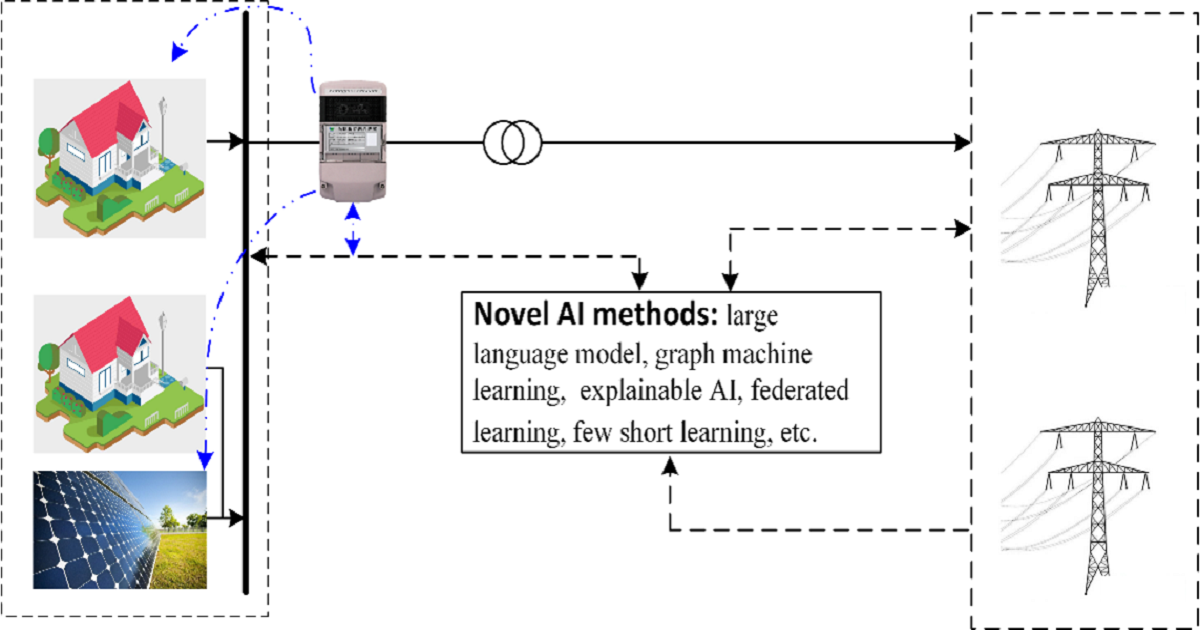Artificial Intelligence in Energy Sector
A special issue of Energies (ISSN 1996-1073). This special issue belongs to the section "F5: Artificial Intelligence and Smart Energy".
Deadline for manuscript submissions: closed (30 June 2025) | Viewed by 2795

Special Issue Editors
Interests: power system stability; power system simulation; microgrid
Interests: power distribution systems; microgrids; renewable energy; smart grids
Special Issues, Collections and Topics in MDPI journals
Interests: power system operation; generative machine learning
Interests: transportation electrification; smart grid
Special Issues, Collections and Topics in MDPI journals
Special Issue Information
Dear Colleagues,
Modern power systems have evolved with the development of advanced artificial intelligence (AI) and big data technology such as large language models (LLMs), graph machine learning, graph computing, explainable AI, federated learning, few-shot learning, embedded machine learning, edge computing and so on. This Special Issue aims to collect and publish recent progress made pertaining to either theoretical innovation or practical applications of recent cutting-edge AI methods in energy system-related areas (e.g., electrical power, gas, heat). The topics include, but are not limited to, the following:
- AI methods for active distribution networks (outage detection, restoration, etc.);
- AI methods for power markets (trading, auction, mechanism design, etc.);
- AI methods for microgrid operation and control (island operation, protection, etc.);
- AI methods for power system dynamics (simulation, model reduction, etc.);
- AI methods for power system reliability analysis (Monte Carlo acceleration, etc.);
- AI hardware for power system applications (edge computing, embedded AI, etc.);
- AI for building energy optimization and control;
- AI for EV charging scheduling;
- Other topics involving novel AI progress in energy systems.
Dr. Yongli Zhu
Dr. Qianzhi Zhang
Dr. Yishen Wang
Dr. Chaoxian Wu
Guest Editors
Manuscript Submission Information
Manuscripts should be submitted online at www.mdpi.com by registering and logging in to this website. Once you are registered, click here to go to the submission form. Manuscripts can be submitted until the deadline. All submissions that pass pre-check are peer-reviewed. Accepted papers will be published continuously in the journal (as soon as accepted) and will be listed together on the special issue website. Research articles, review articles as well as short communications are invited. For planned papers, a title and short abstract (about 100 words) can be sent to the Editorial Office for announcement on this website.
Submitted manuscripts should not have been published previously, nor be under consideration for publication elsewhere (except conference proceedings papers). All manuscripts are thoroughly refereed through a single-blind peer-review process. A guide for authors and other relevant information for submission of manuscripts is available on the Instructions for Authors page. Energies is an international peer-reviewed open access semimonthly journal published by MDPI.
Please visit the Instructions for Authors page before submitting a manuscript. The Article Processing Charge (APC) for publication in this open access journal is 2600 CHF (Swiss Francs). Submitted papers should be well formatted and use good English. Authors may use MDPI's English editing service prior to publication or during author revisions.
Keywords
- artificial intelligence (AI)
- large language model (LLM)
- graph machine learning
- federated learning
- energy system
- microgrid
Benefits of Publishing in a Special Issue
- Ease of navigation: Grouping papers by topic helps scholars navigate broad scope journals more efficiently.
- Greater discoverability: Special Issues support the reach and impact of scientific research. Articles in Special Issues are more discoverable and cited more frequently.
- Expansion of research network: Special Issues facilitate connections among authors, fostering scientific collaborations.
- External promotion: Articles in Special Issues are often promoted through the journal's social media, increasing their visibility.
- Reprint: MDPI Books provides the opportunity to republish successful Special Issues in book format, both online and in print.
Further information on MDPI's Special Issue policies can be found here.








